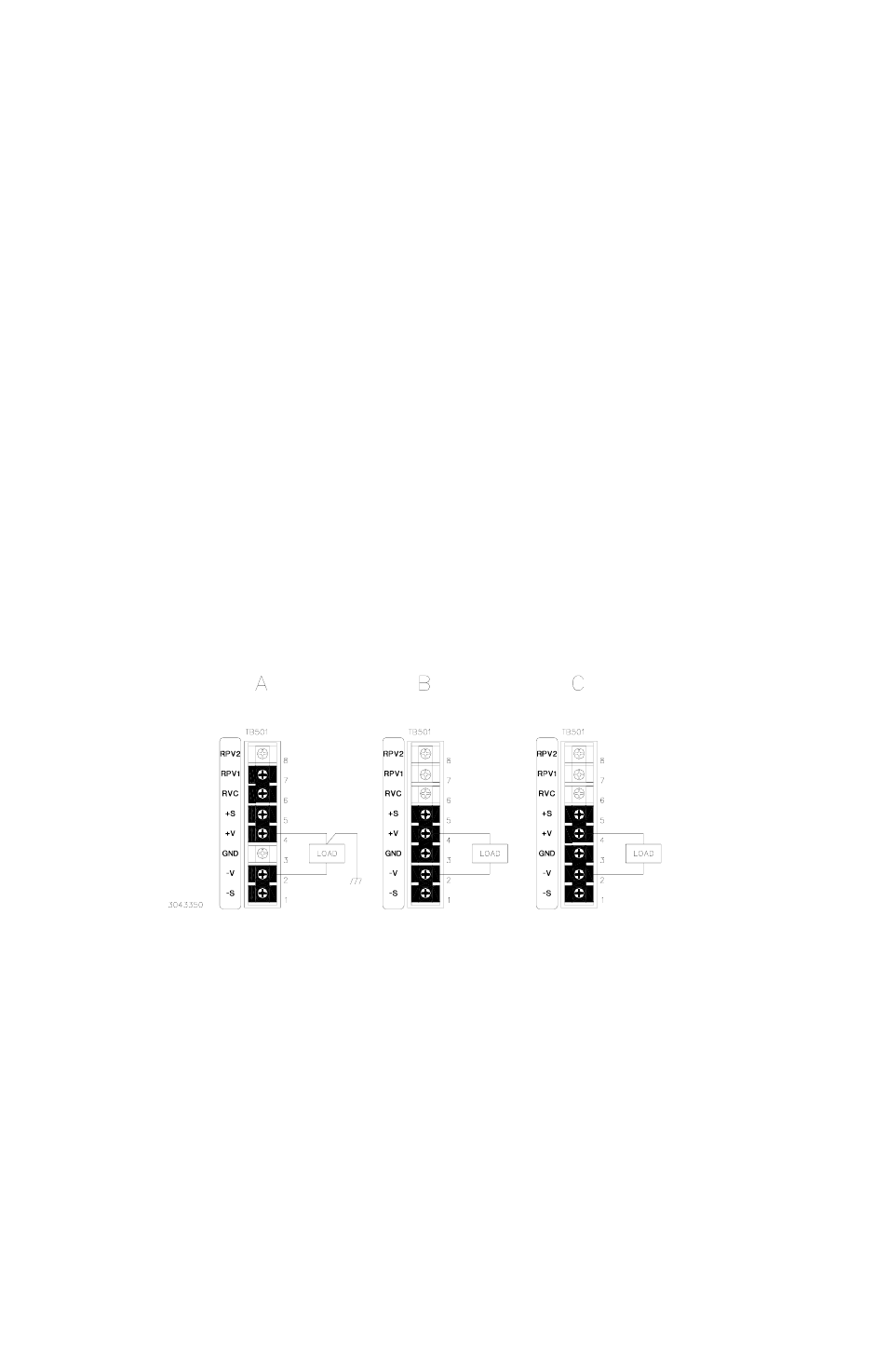3 grounded load connection, Figure 3-2. grounded load connections, Grounded load connection -2 – KEPCO JQE 150-1.5MVPY-26956 Half Rack User Manual
Page 26: Grounded load connections -2

3-2
JQE SPECIAL SVC 081111
remote error sensing. A twisted, shielded pair of wires from the sensing terminals directly to the
load will compensate for load wire voltage drops up to 0.5 volt per wire (Refer to Figure 3-1B).
Observe polarities: for example, the positive sensing wire (from TB 501 +S) goes to the positive
load terminal (connected to terminal +V).
To keep the DC voltage drop in the load connecting wires to a minimum, and to preserve the
dynamic characteristics of the power supply (AC stability, output impedance and recovery time),
load wires should be as short as possible and as large in diameter as practicable. Error sensing
leads should be #22 AWG and as short as possible. Both lead pairs should preferably be tightly
twisted. For minimum ripple and noise pick-up, the error sensing leads must be shielded. The
shield should be returned to the ground point of TB501.
3.2.3
GROUNDED LOAD CONNECTION
If the load has one end connected to EARTH-GND, then connect the load termination con-
nected to EARTH-GND to +V of TB501 at the rear panel for better output noise performance
(see Figure 3-2A). For this configuration the voltage across the load will be negative with
respect to chassis GND,
If the load is floating, but it is desired to have the JQE having the output with a certain polarity
with respect to chassis GND, connect locally at TB501, either + V terminal to GND for a nega-
tive output voltage referenced to chassis GND (see Figure 3-2B), or connect -V terminal to GND
for a positive output voltage referenced to chassis GND (see Figure 3-2C).
FIGURE 3-2. GROUNDED LOAD CONNECTIONS
GROUNDED LOAD CONNECTION,
FOR A NEGATIVE OUTPUT
WITHOUT REMOTE ERROR SENSING
NEGATIVE OUTPUT
REFERENCED TO CHASSIS
WITHOUT REMOTE ERROR SENSING
POSITIVE OUTPUT
REFERENCED TO CHASSIS
WITHOUT REMOTE ERROR SENSING
